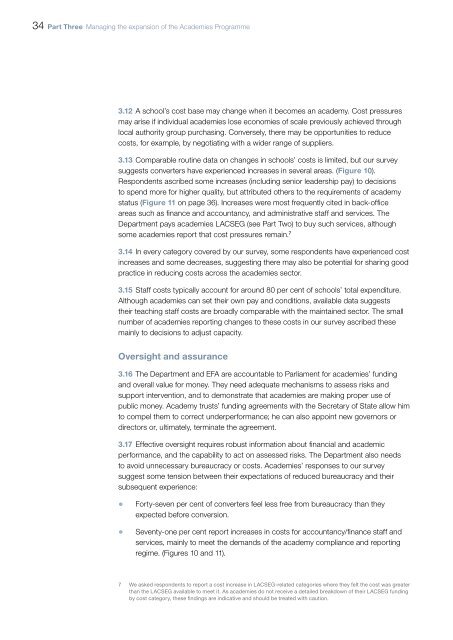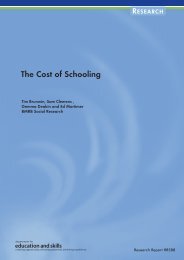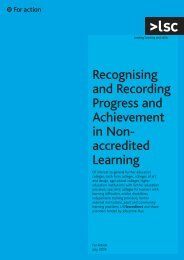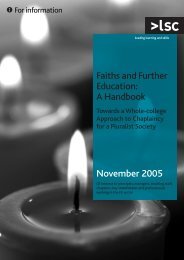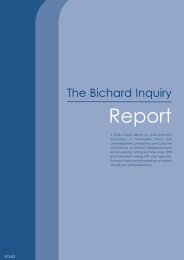Full Text (PDF) - Official Documents
Full Text (PDF) - Official Documents
Full Text (PDF) - Official Documents
Create successful ePaper yourself
Turn your PDF publications into a flip-book with our unique Google optimized e-Paper software.
34 Part Three Managing the expansion of the Academies Programme<br />
3.12 A school’s cost base may change when it becomes an academy. Cost pressures<br />
may arise if individual academies lose economies of scale previously achieved through<br />
local authority group purchasing. Conversely, there may be opportunities to reduce<br />
costs, for example, by negotiating with a wider range of suppliers.<br />
3.13 Comparable routine data on changes in schools’ costs is limited, but our survey<br />
suggests converters have experienced increases in several areas. (Figure 10).<br />
Respondents ascribed some increases (including senior leadership pay) to decisions<br />
to spend more for higher quality, but attributed others to the requirements of academy<br />
status (Figure 11 on page 36). Increases were most frequently cited in back-office<br />
areas such as finance and accountancy, and administrative staff and services. The<br />
Department pays academies LACSEG (see Part Two) to buy such services, although<br />
some academies report that cost pressures remain. 7<br />
3.14 In every category covered by our survey, some respondents have experienced cost<br />
increases and some decreases, suggesting there may also be potential for sharing good<br />
practice in reducing costs across the academies sector.<br />
3.15 Staff costs typically account for around 80 per cent of schools’ total expenditure.<br />
Although academies can set their own pay and conditions, available data suggests<br />
their teaching staff costs are broadly comparable with the maintained sector. The small<br />
number of academies reporting changes to these costs in our survey ascribed these<br />
mainly to decisions to adjust capacity.<br />
Oversight and assurance<br />
3.16 The Department and EFA are accountable to Parliament for academies’ funding<br />
and overall value for money. They need adequate mechanisms to assess risks and<br />
support intervention, and to demonstrate that academies are making proper use of<br />
public money. Academy trusts’ funding agreements with the Secretary of State allow him<br />
to compel them to correct underperformance; he can also appoint new governors or<br />
directors or, ultimately, terminate the agreement.<br />
3.17 Effective oversight requires robust information about financial and academic<br />
performance, and the capability to act on assessed risks. The Department also needs<br />
to avoid unnecessary bureaucracy or costs. Academies’ responses to our survey<br />
suggest some tension between their expectations of reduced bureaucracy and their<br />
subsequent experience:<br />
• Forty-seven per cent of converters feel less free from bureaucracy than they<br />
expected before conversion.<br />
• Seventy-one per cent report increases in costs for accountancy/finance staff and<br />
services, mainly to meet the demands of the academy compliance and reporting<br />
regime. (Figures 10 and 11).<br />
7 We asked respondents to report a cost increase in LACSEG-related categories where they felt the cost was greater<br />
than the LACSEG available to meet it. As academies do not receive a detailed breakdown of their LACSEG funding<br />
by cost category, these findings are indicative and should be treated with caution.


